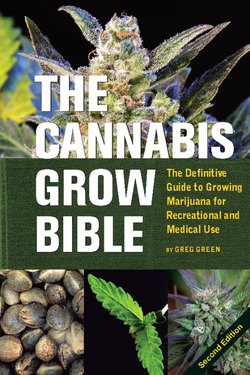Читать книгу The Cannabis Grow Bible - Greg Green - Страница 16
На сайте Литреса книга снята с продажи.
THC Quantities
ОглавлениеTHC quantities are related to bud mass and how much resin can be collected from that bud mass. By way of example: the level of THC found in a single trichome gland when comparing the cannabinoid content of that trichome was 10 percent. That plant produced .5 oz. of resin under average growing conditions. Out of that resin, maybe .05 oz. was THC. This 10 percent level seems to be genetically set in the plant. Under optimal growing conditions, the plant may have the genetic capability of producing .75 oz. of resin. Out of that resin, maybe .075 oz. will be THC. It is the case here that the THC quantity has increased from .05 to .075 oz., but the THC level of 10 percent remained the same.
This is what it is all about. These are the results that every grower eventually hopes to see: colas deep with resinous trichomes.
Elevation view of trichomes. The density and sizes of trichomes can vary quite dramatically between strains. Note bigger and more does not necessarily mean stronger.
THC levels correspond to the ratio of THC to other cannabinoids contained in the trichomes of the pistils of flowering female plant. Although this ratio varies depending on the strain, how it is grown, when it is harvested, and how it is cured, under optimal conditions a stable strain should produce a consistent THC level that is genetically inherited. Once the THC level is genetically set in the seed it cannot be increased past this point during the plant’s life.16 Likewise, the maximum quantity of bud that the plant can produce is also genetic and cannot increase past this point during the plant’s life. The grower should endeavor to create a growing environment that optimizes both these traits to their full potential. Emphasis should be made here on choosing good genetics. You can’t improve on something that isn’t there in the first place. This cannot be understated.
An optimally potent plant will have both high levels and quantities of delta-9 THC. Cannabis plants also produce a compound called delta-8 THC. This ingredient is found in low levels but does contribute to the high. When we mention THC levels, we are referring to both delta-8 and delta-9 THC. There are also other ingredients that add to the high, such as CBD, CBN, THCV, CBDV, CDC, and CBL. Since these are minor components compared to THC they will not be discussed in this book.
When examining a strain in a seed bank catalogue you can check the THC levels of that plant to understand the potency. Many seed retailers and breeders measure their plants’ THC levels and offer accounts of how much THC their plants have. Of course, breeders may be tempted to embellish the THC levels their plants produce. If you want to know more about the THC level of a specific strain, you should consider consulting the seed bank or breeder for details.
Another interesting fact is that some cannabis plants do not produce any THC at all. These plants have been bred to produce very low levels of THC and are mainly used by farmers in countries that permit the growth of cannabis for textile production.This hemp does not produce a high. (These hemp seeds may be found in birdseed.)
